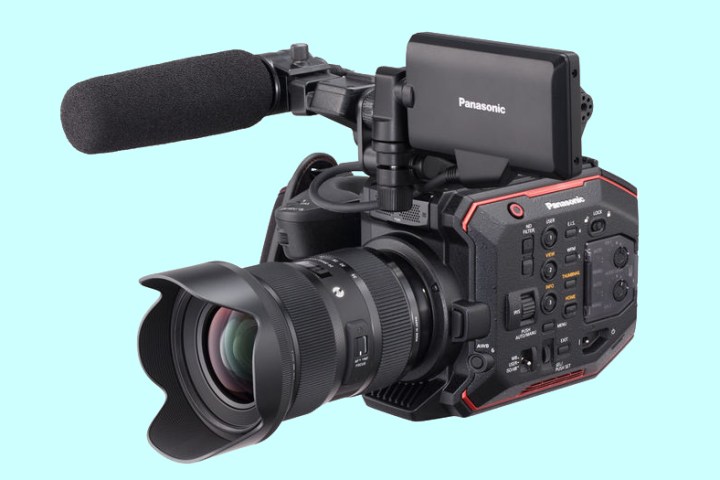
“For cinema-style acquisition, we realized there was a space between the GH5 and the VariCam LT,” Panasonic Cinema Product Manager Mitch Gross said in a press release. “With its compact size and new 5.7K sensor, the EVA1 fills that gap for a variety of filmmaking applications.”
The EVA1 is designed to offer high-end cinema features in a size that is better suited for handheld shots, whether that is for getting a different composition or for easier on-site recording. Despite using a 5.7K resolution sensor, the camera weighs about 2.65 pounds without a lens in a body that’s less than seven inches at the widest point. A removable hand grip makes the camera easy to hold steady while the lightweight profile means the camera can also be used with drones, gimbals and jib arms, Panasonic said.
Like the VariCam LT, the EVA1 includes Dual Native ISO, a process of reading the data from the sensor that creates less noise at higher ISOs, which means fewer lights are required on set. The camera also uses the same V-Log or V-Gamut as Panasonic’s high-end camcorders, which creates a high dynamic range and broader colors.
Built-in neutral density filters give videographers more exposure control without needing to swap out filters. An internal IR Cut filter means the camera can also switch from the usual recording to an infrared camera with a button.
The camera is also set to record on easily accessible SD cards, with multiple formats and compression rates available, from a 10-bit 4:2:2 in 4K to a high-speed, 240 fps 2K option. The camera is compatible with EF mount lenses.
The EVA1 is expected to begin shipping this fall, with a list price under $8,000 for the body.
Editors' Recommendations
- Smaller and cheaper, the full-frame Lumix S5 is exactly what Panasonic needed
- Leica SL2 vs Panasonic Lumix S1R: Two L-mount leaders with one big difference
- Panasonic Lumix S1H is the first full-frame camera that can shoot 6K video
- Panasonic Lumix S1 vs. Canon EOS R: A full-frame mirrorless matchup
- Panasonic Lumix S1 vs. Nikon Z 6: Entry-level camera comparison




